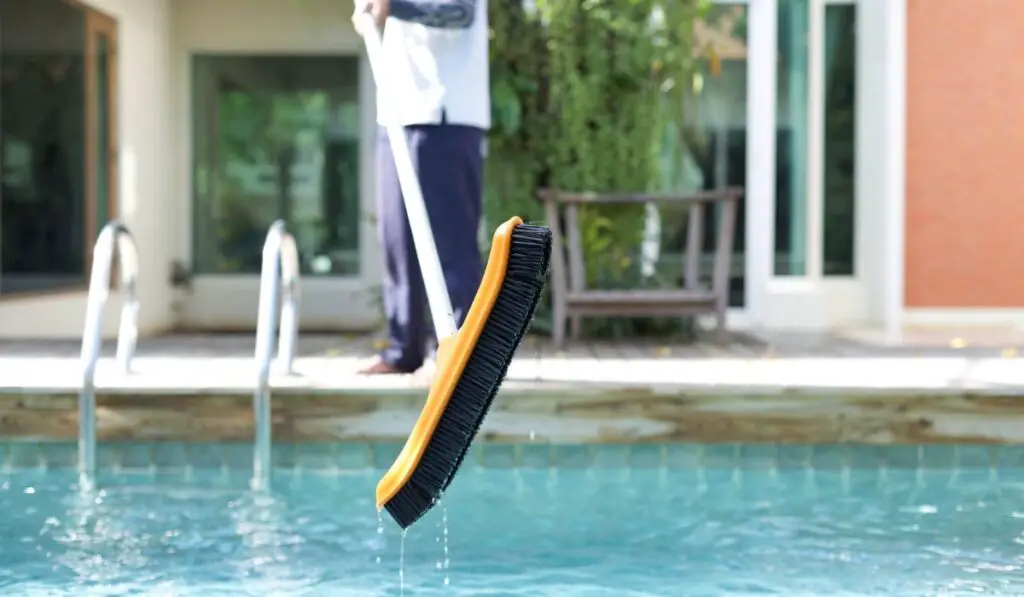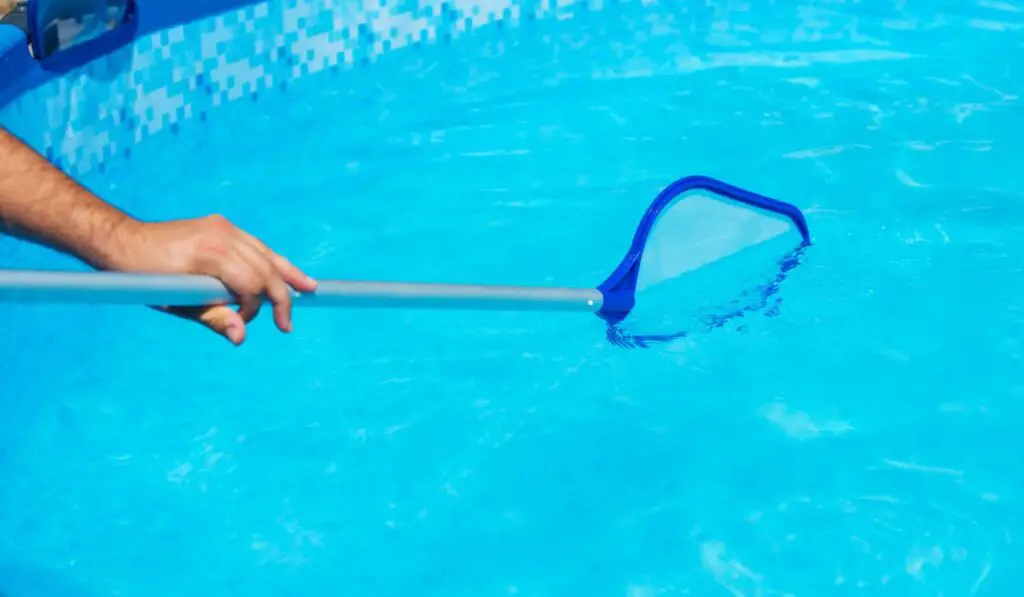Vacuuming your pool is vital as it keeps it clean and free of dirt and debris. While a specialty pool vacuum makes the cleaning process painless, you can still clean your pool without it. So, how can you clean your pool if you don’t own a vacuum?
Depending on the type of dirt in your pool, you can use a brush or tennis balls to clean it. Of course, you can also rely on your pool’s filter system to do all the cleaning. Other ways include using a skimmer net, a dustpan, or even your hands.
Cleaning your pool without a vacuum seems challenging, but it becomes a simple task with the right equipment. So let’s get into the details so you find out everything you’ll need to make your work seamless.
Can You Clean a Pool Without a Vacuum?

You can clean a pool without a vacuum, although it may require creativity and patience. Doing so also calls for the right tools at the correct time.
Since there are different types of dirt in your pool, it would be best to take note of the dirt and deal with it properly. Then, you can use other cleaning methods and tools depending on the dirt you want to get rid of.
What Supplies Do You Need?
Below are some of the equipment you’ll need to clean your pool correctly if you can’t get your hands on a vacuum:
Thick Brush
A thick brush is handy when removing algae and debris from your pool. However, not just any type of brush can do the trick. You’ll need to consider your pool surface material before picking the most suitable brush to scrape it clean with.
For instance, if your pool is concrete, use a metal or stainless steel brush to clean it. Otherwise, use a rubber or nylon brush like this one (on Amazon) for a gentler tough on vinyl liners.
Brush the walls, floor ladders, and steps of your pool repeatedly to scrape off the dirt and loosen it. Once you’re done, you’ll need to use other methods to remove the dirt. If you have a filter pump running, it will do the job for you. If not, you’ll have to manually scoop the dirt from the base of your pool.
Tennis Balls
Tennis balls (on Amazon) are great for eliminating oily dirt from your pool. They attract oily dirt floating around the water, including lotions, other skin care products, and chemicals like insect repellents you may have sprayed on yourself or around the pool.
To use the balls, throw them into the pool and let them hover around freely. Gradually, they’ll attract the oils and chemicals towards them.
Remove them afterward, clean them up gently, let them dry and toss them in a box for future use. You can also throw the balls away and buy a new set, as they are relatively inexpensive.
Leaf Rake
A leaf rake is perfect for removing large debris floating around your pool or sunken at the bottom. A plastic leaf rake is better as it doesn’t scratch the pool’s bottom or sides, leaving unsightly marks. When you’ve gathered the debris in one corner, remove them with an appropriate implement.
Dustpan
You can use a dustpan to scoop out dirt that settled at the base of your pool. First, dive underwater and push the dirt onto the dustpan, then rise with it steadily. Any quick movements will displace the dirt from the dustpan and back into the water.
Skimmer Net
The skimmer net (example on Amazon) is ideal for pools with dirt that don’t dissolve in the water. These include leaves, pieces of wood, and flower petals, among others. You need to remove such contaminants before they rot or break up into smaller pieces that can be a real headache to remove.
How to Shock a Pool
Pool shocking is an effective method of cleaning and removing algae. It balances the free chlorine level to kill algae and bacteria in the pool. First, you’ll need to gather the following items:
- Calcium hypochlorite pool shock
- Safety goggles
- A bucket
- A pair of hand gloves
Now that you have them at hand, follow these steps:
- First, add a pound of calcium hypochlorite to a bucket of water and mix until it forms a uniform solution.
- Pour the solution into the areas in your pool most affected by algae.
- Let the pool run for 12 hours so the shock mixes properly with the water. The water should start turning cloudy at this stage.
- After the 12 hours, add a pool clarifier to eliminate the cloudiness from your pool water. Alternatively, you can just let the pool run for another full day until it clears up on its own.
How to Remove Algae Without a Vacuum
The following are ways to remove algae from your pool without a vacuum:
Using the Pool Filter
Pools with filters make it pretty easy to get rid of algae. You only need to wash the filter thoroughly to avoid blockages, then turn it off. Next, brush the bottom and sides of your pool with the appropriate brush, switch on the filter, and let it work its mojo on the dirty water.
Using Pool Shocks
Shocking alters the pH level of your pool water, making it very unconducive for the survival of algae and bacteria. The more serious your algae situation, the more shock you’ll have to use.
Calcium hypochlorite shock is the most efficient for algae treatment. Stick to the package instructions as you use it in your pool. A double dose of shock should take care of the problem if it’s green algae. Use a triple dose for yellow algae and a quadruple dose for black algae.
Be sure to shock the pool for 12 hours overnight to spread the shock around completely. If you shock in the daytime, the sun will break down a huge chunk of the chlorine before it kills off all the algae.
Using Algaecides
Algaecides are the best option if you’ve tried everything, but your pool still has some algae left. These formulas limit algae growth in the pool, and using them is pretty simple. They also need no extra tools to execute the job.
To use the algaecides, run your pool’s pump constantly to keep the water circulating, then pour the algaecides into the pool after a few minutes. Give it 24 hours to kill all the algae in your pool.
How Do You Use a Skimmer Net?

Using a leaf skimmer net is pretty straightforward and doesn’t require any expert skills. Here’s how to use it:
- First, scrub the walls and floor of your pool with a brush to remove algae.
- Attach the skimmer net to a telescoping pole. Check that the net is clean and has no previously trapped debris.
- Skim your pool’s surface with the skimmer net to trap floating leaves and twigs. You can do this daily to prevent the twigs and leaves from sinking to the bottom.
- If any have sunk and accumulated at the bottom of the pool, you may have to get into the pool to remove them with the skimmer.
How to Remove Sand Without a Vacuum
If you don’t have a vacuum, you can use a rake and leaf net to remove sand from your pool. Use the rake to gather the sand into a pile, remove it with the leaf net, then bag it up and dump it in the trash.
